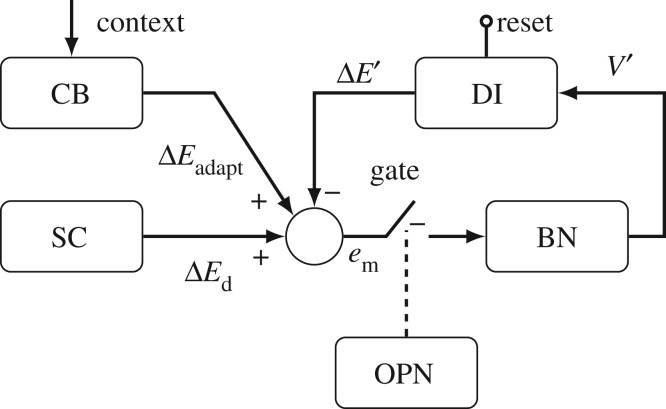Figure 1.
Classical local feedback loop model of the saccadic burst generator. The burst neuron (BN) is driven by the internal motor error (em), the difference between the output of the superior colliculus (SC), desired change in eye orientation (ΔEd), and the movement's progress so far (ΔE′). Progress is tracked by the displacement integrator (DI), which integrates the velocity drive signal (V′) coming from the BN. The DI must be reset after each saccade. The inhibitory omnipause neurons (OPN) act as a gate, preventing the system from oscillating between saccades. The cerebellum (CB) adapts saccade amplitude by adding another drive signal (ΔEadapt) based on the movement's context.

